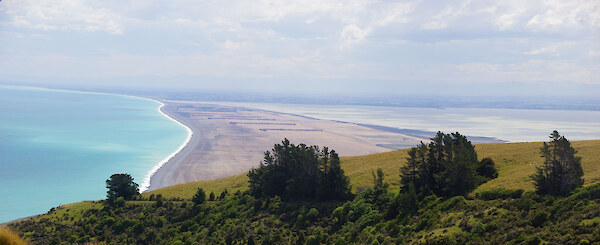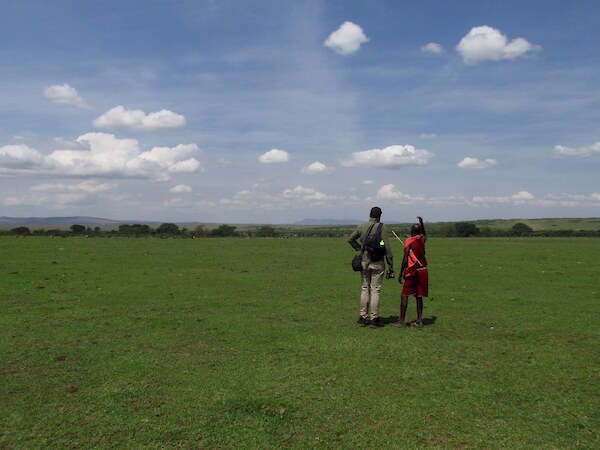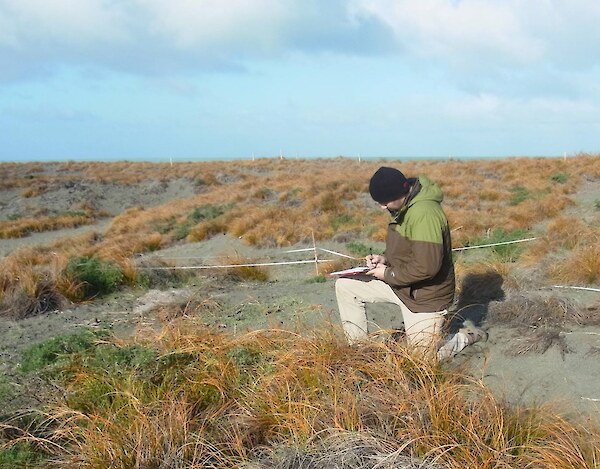2014 scholarship recipient completes his thesis.
“What ever happened to that guy who got the CRT postgraduate award in 2014?
Lots…
In other news:
I finally finished my thesis earlier this year. In 2014 I was awarded the then Dune Restoration Trust award for my (somewhat foolishly?) ambitious MSc. project looking at the use of drones for monitoring coastal dune ecosystems. What started as a multi-year study of two different sites involving vegetation and invertebrate studies gradually turned into a comprehensive single year, single site analysis of the dune vegetation at Kaitorete Spit. But hey, good things come to those who wait, right?
 So what are UAS (Unmanned Aerial Systems) like for coastal monitoring? It depends. In my study, I compared good honest field work data to that gathered via Remote Sensing (aerial imagery). Because of the physical and biological complexity of Kaitorete Spit (a beautiful and ecologically significant barrier beach complex between Lake Waihora/Ellesmere and the Pacific Ocean), my broad-scale imagery data for the site was only really useful at detecting coarse-scale habitat and vegetation features and patterns. Large significant species were able to be identified with a strong degree of confidence, however small or rare species with low detectability proved more complicated. Low detection can result from things not being able to be found in the field, but also a failure to properly locate them in the imagery.
So what are UAS (Unmanned Aerial Systems) like for coastal monitoring? It depends. In my study, I compared good honest field work data to that gathered via Remote Sensing (aerial imagery). Because of the physical and biological complexity of Kaitorete Spit (a beautiful and ecologically significant barrier beach complex between Lake Waihora/Ellesmere and the Pacific Ocean), my broad-scale imagery data for the site was only really useful at detecting coarse-scale habitat and vegetation features and patterns. Large significant species were able to be identified with a strong degree of confidence, however small or rare species with low detectability proved more complicated. Low detection can result from things not being able to be found in the field, but also a failure to properly locate them in the imagery.
 So if image data quality is the issue, why not just go out and get as much high-resolution data as possible? While this may be feasible for small scale studies, for a site such as Kaitorete Spit, which is relatively large, the handling, storage and processing of such large datasets are often out of reach for small community groups. The concepts of scale in ecology and data collection have long been applied for field based data collection. What’s important for the future of remote sensing in ecology is the ability to bring these principles in scientific design into modern data science. We need to let technology serve and build our scientific understanding, rather than letting us be led by the technology itself.”
So if image data quality is the issue, why not just go out and get as much high-resolution data as possible? While this may be feasible for small scale studies, for a site such as Kaitorete Spit, which is relatively large, the handling, storage and processing of such large datasets are often out of reach for small community groups. The concepts of scale in ecology and data collection have long been applied for field based data collection. What’s important for the future of remote sensing in ecology is the ability to bring these principles in scientific design into modern data science. We need to let technology serve and build our scientific understanding, rather than letting us be led by the technology itself.”
To read Mike’s thesis, check our Postgraduate Scholarship page, or find it in our data base.
Posted: 30 October 2019 in the News category

